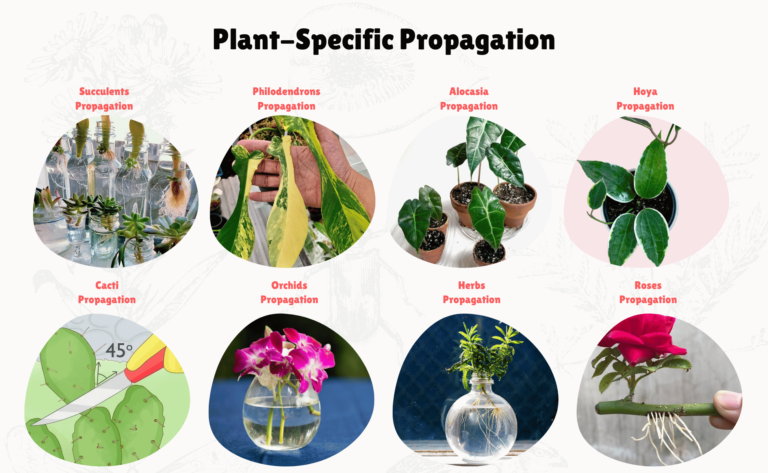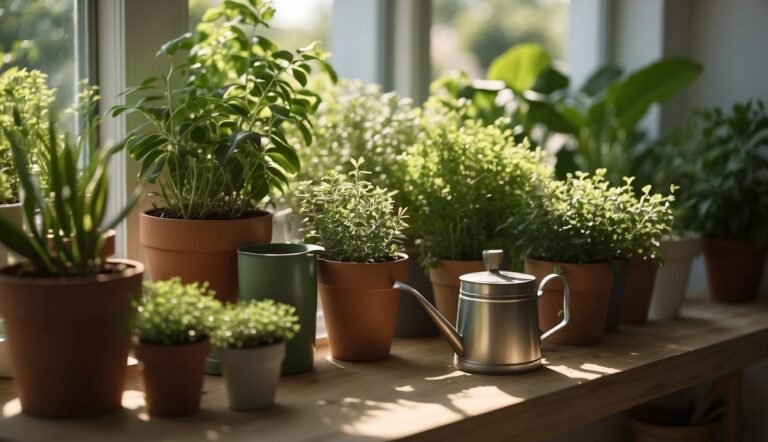Distantilobum Identification, Uses, and Key Characteristics
When I first heard about distantilobum, I was drawn in by its unique, spiky leaves and the way it stands out among other philodendrons.
Distantilobum is an easy to care for, fast-growing plant with an unmistakable leaf shape that can become a real centerpiece in any plant collection.
This rare houseplant isn’t found everywhere, which makes it even more interesting for someone who wants something special.

I quickly learned that giving distantilobum the right support, like a moss pole or wood plank, helps it grow larger and more striking leaves.
As someone who loves finding out what makes each plant thrive, I wanted to share what I’ve learned about this uncommon and eye-catching variety.
Understanding Distantilobum

I find Distantilobum is a fascinating plant because of its unusual appearance and unique growing habits.
It stands out with finger-like leaves, climbing growth, and a native range that stretches across South America.
Taxonomy and Classification
Distantilobum belongs to the genus Philodendron, which is in the Araceae family.
Scientists recognize it as a neotropical species that originally comes from rainforests in countries like Peru and Brazil.
Its formal name, Philodendron distantilobum, helps experts identify it apart from similar-looking species.
Philodendrons, including distantilobum, are aroids.
This means they share features like aerial roots and large leaves that are common in the Araceae family.
Below is a table showing the main classification:
| Level | Name |
|---|---|
| Family | Araceae |
| Genus | Philodendron |
| Species | distantilobum |
Distantilobum is sometimes confused with other philodendrons, but botanists use its leaf shape and node length to tell it apart.
Botanical Characteristics
What makes distantilobum special is its huge, finger-shaped leaves.
The leaf shape is both long and lobed, which gives the plant a bold look.
The leaves are not only striking but elegant and can grow quite large if allowed to climb.
The plant grows by attaching itself to trees or a totem.
Distantilobum is a climber with long nodes, allowing it to stretch and reach for more light.
The roots usually grip to bark or support poles.
When cared for outdoors in the tropics, it performs best as a climbing plant with established root systems.
The wide, lobed leaves make identification easier compared to other philodendrons.
Common Species
The name “distantilobum” refers to a specific species within the philodendron group.
Sometimes the plant is sold as different forms, such as the Philodendron distantilobum ‘Wide Form’.
These forms mostly refer to variations in leaf width or shape.
This species is rare and can sometimes be confused for other lobed philodendrons.
However, its distinctive finger-like, lobed leaves make it recognizable.
The plant is popular among collectors and enthusiasts looking for unique climbing philodendrons with large, showy foliage.
Other philodendrons may look similar, but distantilobum keeps a strong reputation for its striking leaf pattern and growth style.
Habitat and Distribution

Distantilobum is native to parts of South America and thrives in warm, humid environments.
Its success in the wild depends on stable, tropical conditions and a reliable water source.
Geographical Range
This plant naturally grows from Peru to Bolivia and extends into northern Brazil.
In the wild, distantilobum is mainly found in lowland rainforests, where the climate is humid year-round.
The plant’s range covers a wide area within the Amazon basin.
It’s especially common in regions with dense canopy cover and consistent rainfall.
Distantilobum often climbs trees and adapts to vertical spaces in these forests.
For a detailed range map, see the Plants of the World Online entry for Philodendron distantilobum.
Preferred Environmental Conditions
Distantilobum is a climbing plant that prefers wet, tropical biomes with high humidity—typically between 60% and 80%.
It grows best in spots with bright, indirect light, shielded by taller trees or foliage.
The plant thrives in well-draining, moist soil.
I water it when the top layer of soil dries out a bit, but not completely.
Distantilobum also responds well to added support, like moss poles, because it naturally climbs in its habitat.
For growing tips, see GrowTropicals.
Key requirements include:
- Humidity: 60–80%
- Light: Bright, indirect
- Water: Let the top 3 cm of soil dry between waterings
- Support: Benefits from structure for climbing
Ecological Significance of Distantilobum
Philodendron distantilobum is more than just a decorative plant.
It plays a part in its environment and helps support other living things around it.
Role in Local Ecosystems
In its tropical habitat, Distantilobum acts as a climbing vine.
It helps create a layered forest structure by growing on trees and providing extra shade and shelter.
Its broad leaves can shade the soil below, helping to keep in moisture and lower ground temperatures.
This supports smaller plants that might not survive direct sunlight.
As an epiphyte or semi-epiphyte in the wild, it can anchor itself on tree trunks.
This does not harm the host tree but adds to the complex web of life found in tropical canopies.
This aids in maintaining rainforest humidity and stability for a range of species.
Interactions With Wildlife
Distantilobum acts as a microhabitat for insects and small animals.
Its leaves and stems provide cover for creatures like spiders, beetles, and tree frogs.
Many philodendrons, including Distantilobum, may offer food or resting places for arboreal animals.
Birds can use its branches for shelter, and some insects feed on decaying plant matter or nectar.
Some species may depend on its presence during specific seasons, using its structure for nesting or escaping predators.
Having Distantilobum in the ecosystem increases diversity and stability for many forms of life.
Practical Applications and Cultivation
Philodendron distantilobum is both attractive and functional.
It is suited for indoor collections and lends itself well to modern tropical designs.
This species also responds well to structured support and is flexible in cultivation.
Horticultural Uses
Philodendron distantilobum is excellent for both home and commercial interiors.
The plant’s long, spiked leaves stand out when used as a statement piece.
It is often recommended for use in vertical gardens, as it climbs easily using totems or moss poles.
Its ability to grow fast and tolerate a range of lighting makes it suitable for busy plant owners.
It can thrive in low light, but it shows its best growth and larger leaves with bright, indirect light.
Many collectors value its rare appearance.
Despite being hard to find, it is becoming more popular in specialty plant shops.
For those seeking a unique specimen, this plant is a top choice for living rooms, office spaces, and shaded patios.
You can read more about its standout shape and fast growth in Steve’s Leaves’ listing.
Propagation Methods
Stem cuttings are the most effective way to propagate Philodendron distantilobum.
The process starts by selecting a healthy stem with at least one node and a few aerial roots when possible.
After trimming below a node, the cutting should dry for a few hours to prevent rot before planting it in moist sphagnum moss or a perlite mix.
New cuttings are kept in a warm, humid environment and monitored for root growth over the next few weeks.
Misting and indirect sunlight speed up the process.
Once roots develop, the cutting is transferred to a well-draining potting mix.
Seed propagation is uncommon due to slow growth, so cuttings are preferred for reliability and faster results.
This matches guidance shared by sellers like Ken’s Philodendrons.
Frequently Asked Questions
I often get questions about Philodendron distantilobum’s care, ecosystem impact, and regulations.
Here, I address practical concerns, including ways to manage this plant and how to recognize its features.
What is the recommended treatment for distantilobum-related conditions?
When my Philodendron distantilobum showed signs of poor health, such as yellowing leaves and wilt, I checked for root rot.
Overwatering is a main cause, so I improved drainage and let the soil dry out between waterings.
Using a well-draining mix and watering only when the topsoil feels dry helps prevent most problems.
How does distantilobum impact the surrounding ecosystem?
Philodendron distantilobum adapts well to tropical environments.
It can provide shelter for small insects, but I have not seen it spread very aggressively or damage native species.
It may compete with native plants for light and soil nutrients in some areas.
Can distantilobum instances be safely transplanted or relocated?
Philodendron distantilobum responds well to transplanting when done with care.
I make sure to minimize root disturbance and replant during the growing season.
After moving, I keep the soil consistently moist but not soggy, and place the plant in a location with indirect light.
What are the identifying characteristics of distantilobum?
Philodendron distantilobum has long, lobed green leaves that are slightly wavy at the edges.
The stems are thick and sturdy.
I look for its deep green color and the unique shape of its foliage when trying to identify it.
What preventive measures are effective against distantilobum proliferation?
I control growth by pruning back new shoots and removing dead leaves.
Keeping each plant in its own pot with quality soil limits spreading.
For outdoor gardens, installing barriers and monitoring for unwanted seedlings helps maintain boundaries.
I also avoid overwatering, which can encourage unwanted spread or fungal issues, as mentioned in this comprehensive guide.
What are the legal implications of discovering distantilobum on private property?
Laws relating to Philodendron distantilobum are not widely established since it is not considered invasive in most regions.
If I find one on my property, there are no restrictions for keeping, transplanting, or selling the plant.
However, I always check local regulations to confirm there are no new rules.



